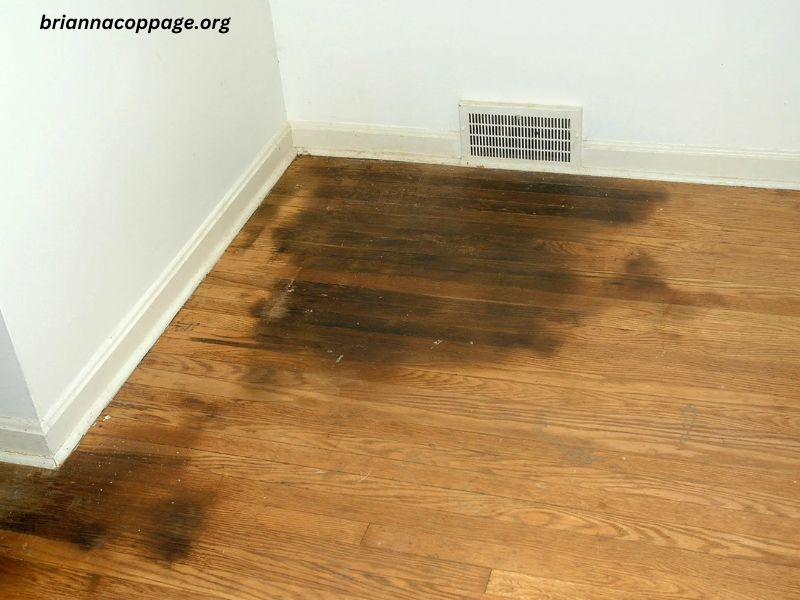Sodium hypochlorite is a powerful chemical compound widely used in various cleaning and disinfecting applications. One of its most common uses is in addressing difficult stains, including pet urine stains on floors. Pet owners, especially those with dogs or cats, frequently face the challenge of dealing with pet urine accidents, which can leave unsightly stains and unpleasant odors behind. In this comprehensive guide, we’ll explore the role of sodium hypochlorite in removing pet urine stains from floors, discuss its effectiveness, and provide important cleaning and safety tips.
What Is Sodium Hypochlorite?
Sodium hypochlorite (NaOCl) is a chemical compound made up of sodium (Na), oxygen (O), and chlorine (Cl). It is a key ingredient in many household cleaning products, most notably bleach. Sodium hypochlorite is highly effective as a disinfectant, deodorizer, and stain remover, making it an ideal solution for tackling a range of cleaning challenges, including pet urine stains on various floor surfaces.
Sodium hypochlorite works by breaking down organic materials such as proteins and fats. This makes it an excellent option for removing stains, including those caused by pet urine, as urine consists primarily of water, urea, creatinine, uric acid, and various other organic compounds. When sodium hypochlorite is used to treat pet urine stains, it works to break down these organic compounds, helping to eliminate stains and neutralize odors.
How Does Sodium Hypochlorite Work on Pet Urine Stains?
Pet urine contains several components that make it challenging to remove, including uric acid crystals that can bond to floor surfaces and cause discoloration and lingering odors. Sodium hypochlorite, when diluted properly, breaks down these compounds, rendering them easier to clean and remove. Here’s how sodium hypochlorite works to eliminate pet urine stains:
- Disinfection: Sodium hypochlorite has strong disinfectant properties, which means it can kill bacteria and other microorganisms that might thrive in pet urine. By disinfecting the affected area, sodium hypochlorite helps to prevent the growth of harmful germs and bacteria, ensuring that your home remains sanitary and safe.
- Deodorization: One of the most challenging aspects of pet urine stains is the unpleasant odor they leave behind. Sodium hypochlorite neutralizes the odor-causing compounds in pet urine, leaving the area smelling fresh and clean. The deodorizing properties of sodium hypochlorite are especially useful in maintaining a pleasant home environment.
- Stain Removal: The active ingredients in sodium hypochlorite work to break down uric acid crystals that are responsible for causing yellow or brown stains on floors. As a result, the stain begins to fade as the compounds are broken down and lifted from the floor’s surface.
- Penetration: When applied to porous surfaces like wood, tile grout, or carpets, sodium hypochlorite penetrates deep into the material, ensuring that the urine stain and odor are completely neutralized, not just on the surface.
Using Sodium Hypochlorite for Pet Urine Stains: A Step-by-Step Guide
While sodium hypochlorite can be highly effective at removing pet urine stains, it must be used with caution to avoid damage to certain types of flooring. Here’s a step-by-step guide to using sodium hypochlorite to remove pet urine stains from your floors:
Step 1: Gather Supplies
Before you start cleaning, ensure you have all the necessary cleaning supplies. Here’s what you’ll need:
- Sodium hypochlorite (bleach)
- Water (for dilution)
- A bucket or spray bottle
- Gloves (to protect your hands from the bleach)
- A mop or cloth for cleaning
- A vacuum or broom for sweeping the area
- A clean towel for drying the floor
Step 2: Sweep or Vacuum the Area
Remove any dirt, debris, or pet hair from the area where the stain is located. Sweeping or vacuuming the floor before cleaning ensures that you don’t push dirt into the stain while cleaning, allowing the sodium hypochlorite solution to focus on the pet urine stain.
Step 3: Prepare the Cleaning Solution
For most cleaning applications, sodium hypochlorite should be diluted with water. A typical dilution ratio is 1 part bleach to 10 parts water. For heavily stained areas, you may increase the concentration of sodium hypochlorite slightly, but it’s crucial not to use it undiluted, as it could damage floors or create strong fumes.
- Mix the sodium hypochlorite with water in a bucket or spray bottle.
- If you’re using a spray bottle, lightly spray the solution over the stained area, ensuring even coverage.
Step 4: Apply the Solution to the Stain
Carefully apply the diluted sodium hypochlorite solution directly to the pet urine stain. Let it sit on the affected area for at least 5–10 minutes. This gives the sodium hypochlorite time to break down the organic compounds in the urine and neutralize the odor.
Step 5: Scrub the Area (If Necessary)
For stubborn stains, you may need to scrub the area gently with a mop or a cloth. Be sure to avoid using harsh scrubbing tools that could scratch the surface of your floors, especially if you are working on delicate floors like hardwood or laminate.
Step 6: Rinse and Dry the Area
After allowing the sodium hypochlorite solution to sit and work its magic, rinse the floor with clean water to remove any residual bleach. Then, dry the floor with a clean towel or cloth to ensure it doesn’t get slippery.
Step 7: Ventilate the Area
Sodium hypochlorite releases strong fumes, so it’s important to ventilate the area while cleaning. Open windows, use fans, or turn on your HVAC system to help circulate fresh air and disperse the fumes. Avoid breathing in the fumes directly, as they can irritate your respiratory system.
Safety Tips When Using Sodium Hypochlorite
While sodium hypochlorite is an effective cleaner, it’s essential to use it with care. Here are some safety precautions to keep in mind:
- Wear Protective Gear: Always wear gloves and, if necessary, goggles when handling sodium hypochlorite. It’s a caustic chemical that can irritate the skin, eyes, and respiratory system.
- Dilute the Bleach: Never use sodium hypochlorite in its concentrated form. Always dilute it with water according to the recommended ratios.
- Avoid Mixing with Other Cleaners: Never mix sodium hypochlorite with ammonia or acidic cleaners (such as vinegar), as this can produce toxic gases.
- Test on a Small Area: Before applying the cleaning solution to the entire stained area, test it on a small, inconspicuous spot on your floor to ensure it doesn’t cause damage or discoloration.
- Store Properly: Store sodium hypochlorite in a cool, dry place away from direct sunlight and other chemicals.
Alternatives to Sodium Hypochlorite for Pet Urine Stains
While sodium hypochlorite can be effective, there are alternative cleaning solutions that are safer for certain types of floors or surfaces. Some of these include:
- Enzyme Cleaners: Enzyme-based cleaners break down the proteins in pet urine, effectively removing stains and odors without harsh chemicals.
- Vinegar and Baking Soda: A mixture of white vinegar and baking soda can be used to clean pet urine stains on carpets or hard floors. This natural alternative is safer for sensitive surfaces.
- Hydrogen Peroxide: Another common stain remover, hydrogen peroxide can be used on pet urine stains, though it should be tested on floors before widespread application.
Preventing Pet Urine Stains in the Future
Preventing pet urine stains is the best way to avoid dealing with difficult cleaning jobs in the first place. Here are a few tips to help prevent your pet from urinating on your floors:
- Proper Potty Training: Ensure that your pet is properly house-trained to minimize accidents.
- Use Pet Pads or Diapers: For pets that struggle with house training, using pet pads or diapers can help prevent accidents indoors.
- Frequent Walks: Take your pet outside frequently to ensure they have plenty of opportunities to relieve themselves.
- Consider Urine Repellents: Some products are designed to discourage pets from urinating on specific areas in your home.
Conclusion
Sodium hypochlorite is a powerful tool in the fight against pet urine floor stains. Its ability to disinfect, deodorize, and remove stains makes it an ideal solution for pet owners struggling with urine accidents. However, it’s important to use sodium hypochlorite safely and properly, as improper use can lead to floor damage or health risks. By following the steps outlined above and taking proper safety precautions, you can effectively use sodium hypochlorite to keep your floors clean and free from the unpleasant effects of pet urine.






